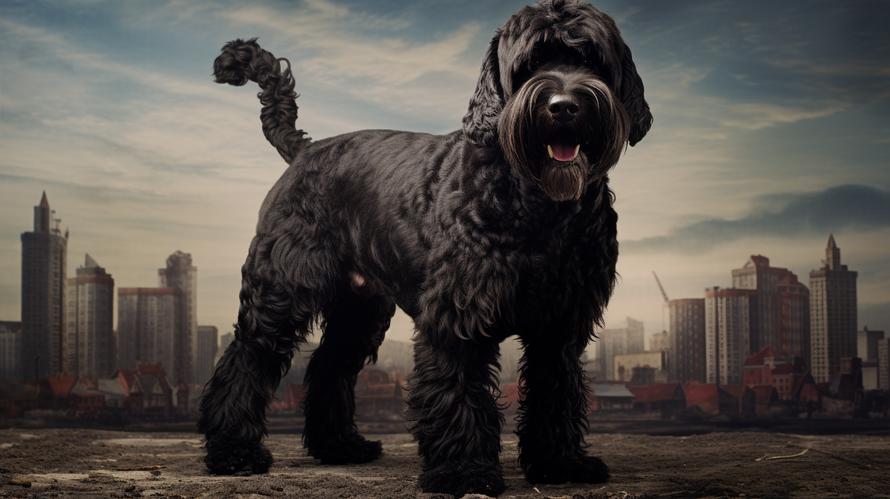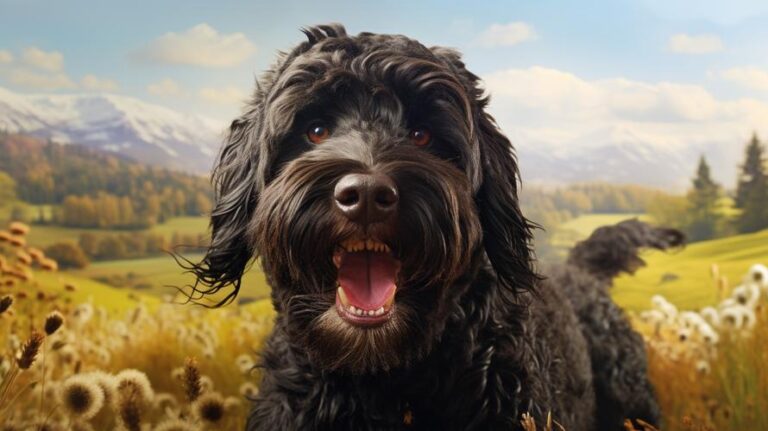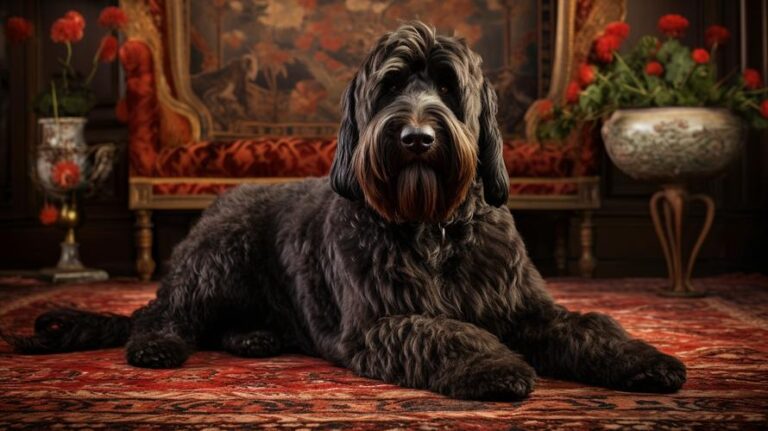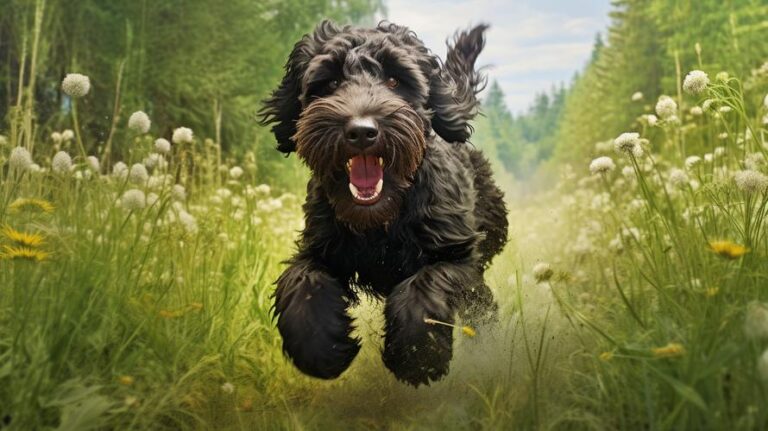Did you know that the Black Russian Terrier (BRT), or “Blackie” as fans often call it, is a relatively new breed, created by the Soviet Union’s Red Star Kennel in the 1940s? To develop a hardy, dependable working dog suited for military operations, breeders mixed seventeen different breeds, including the Airedale, the Giant Schnauzer, and the Rottweiler! This unique blend makes the Black Russian Terrier an interesting, multifaceted breed and potentially a great pet addition to your family.
However, just like any other breed, determining if a Black Russian Terrier would make a good pet is subjective and depends on various factors. Those include your lifestyle, your family dynamics, and most importantly your willingness to provide the necessary care and attention this amazing dog breed requires.
Weighting between 80-145 pounds, the BRT is robust and powerful but can also be as affectionate and intuitive. Characterized by a double coat—a dense, waterproof underlayer and a coarse, protective outer layer, they sport an imposing and tough demeanor, yet they are quite gentle and patient.
Blackies are also known for their impeccable intelligence. These brainy canines have an uncanny ability to judge situations and adapt their behavior accordingly. This may not be surprising once you know they were bred for a variety of tasks, ranging from cart pulling to border control. This intelligence, along with their natural protective instincts, makes the Black Russian Terrier an exceptional watchdog and family protector.
But be cautioned – while their smarts are admirable, it also means they require plenty of mental stimulation. They need tasks and puzzles regularly to keep them from getting bored and becoming destructive.
Black Russian Terriers are also incredibly loyal, forming strong bonds with their families. Thanks to their history as military dogs, they are also very trainable. Keep in mind though; they respond best to firm but patient training methods, and won’t take kindly to being yelled at or harshly disciplined.
One of the distinguishing elements of the BRT is their low-shedding coat. This can be quite appealing to those who don’t enjoy finding dog hair all over their homes. Yet, this blessing comes with a caveat: Black Russian Terriers require diligent grooming to prevent their hair from becoming matted. Regular brushings and trims are a must, as is cleaning their distinctive beards after meals to prevent stains.
As energetic breeds, Black Russian Terriers need a lot of physical activities. They’re not a breed for couch potatoes; they thrive with active owners who enjoy hiking, playing games, or training courses in obedience and agility.
However, they’re adaptable and adjust well to various living situations – even apartments – as long as they get enough exercise and mental stimulation. And though they’re generally friendly, they tend to be reserved with new people and animals, which means they may need continuous socialization training to ensure they remain good canine citizens.
Having a Black Russian Terrier, in short, requires a deep commitment of time and effort. They are not a low-maintenance breed; they demand constant physical exercise, mental stimulation, grooming, and considerable dedication. Yet, those who take the time to understand and meet these dogs’ needs are rewarded with a loyal, protective, and loving companion that can bring joy and fulfillment.
Eventually, deciding whether or not a Black Russian Terrier makes a good pet really relates to your specific situation and lifestyle. For active people who are prepared to invest a lot of time and attention in their pet, willing to train them thoroughly, and able to provide enough physical and mental stimulation, a Black Russian Terrier could make a wonderful pet. If, however, you’re looking for a low-maintenance, easy-going companion that requires minimal grooming and exercise, then the Black Russian Terrier is likely not the best choice for you.
Remember, owning a pet is a long-term commitment that should not be taken lightly. Do thorough research, consider all factors, and make a responsible decision that suits both you and your potential furry friend. Adopting a pet should certainly be a decision of joy, but it should also be a decision made with careful consideration. After all, a pet’s happiness is as important as ours, and knowing what you are in for before making that decision is the first step towards a successful and happy life together.



